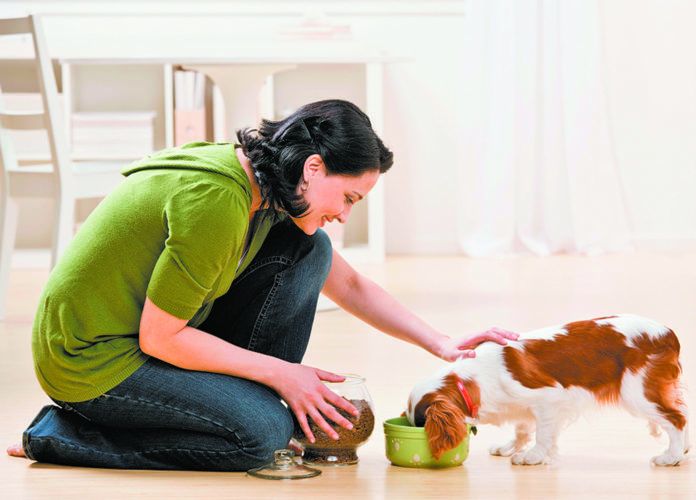More people are feeding their pets homemade diets today than a decade ago even though homemade meal plans for dogs are often rife with nutritional inadequacies and imbalances. Researchers made the finding when they surveyed almost 3,000 households with dogs in the U.S. and several other countries. They also found that more dog guardians are feeding their pets raw animal foods in the mistaken belief that raw animal food is good for the system. And because trends in animal nutrition shadow trends in human nutrition, some people are also feeding their dogs vegetarian diets, despite the fact that making sure dogs can continue to thrive without any animal-based foods can be tricky.
Much of the trend may be because of “the humanization of companion animals,” write the investigators in the journal Veterinary Record. Because people want to bond with their dogs like never before, they may feed homemade diets to pamper their pets in the belief that they will be more palatable — or better for their dogs because they’re made with love. Similarly, if they are vegetarians, they may feel more bonded to a pet if the pet does not eat animal foods. And raw foods are often promoted with earnest but nonetheless false claims of increased energy and improved health overall. Such claims are hard to resist.
To what degree have feeding practices shifted, not just in the U.S. but in other English-speaking countries, including Canada, New Zealand, the UK, and Australia? Back in 2008, 31 percent of people with dogs were estimated to be feeding them at least some homemade dog food, the researchers found when combing through old studies. Today, almost two thirds of people who have dogs make sure at least some of their meals are homemade. Exclusively homemade diets for dogs in the U.S. have doubled.
Similarly, in 2008, 16 percent of pet dogs were fed any meals made with raw animal food. Today, more than 65 percent are given some raw-animal meals. And some dogs are given vegetarian fare exclusively, which is hard to do properly without a veterinarian’s close oversight.
Alarming nutrition concerns
The researchers point out that the most common and significant nutrient insufficiencies in homemade diets are those for calcium, phosphorus, vitamin D, and essential amino acids — the building blocks of protein. Diseases associated with feeding unbalanced diets include pansteatitis (inflammation of fat tissue that can lead to a heightened and painful sense of touch), faulty regulation of bone metabolism and skeletal abnormalities, myelopathy (a disorder of the spinal cord that can lead to paralysis), and seizures.
Diets made with raw animal foods are also associated with nutritional deficiencies. At the same time, they pose the risk of feeding dogs harmful bacteria on raw meat that are not killed with cooking. These same bacteria can also sicken people if, say, they don’t wash their hands or utensils carefully enough after handling. Of greatest concern, the researchers say, is the possibility that antibiotics will prove useless in trying to kill bacteria causing serious illness.
Love your dog, but settle for a little extra nutrition
Long gone are the days when dogs were bred to work. More and more, they are part of our families, and the researchers say that “may contribute to the feeding of unconventional diets.” The intention to treat our dogs well makes sense, but it doesn’t square with nutrition science.
To insure that your dog has the best nutrition, and therefore the best health possible, the World Small Animal Veterinary Association generally recommends choosing food produced by a reputable manufacturer. That helps insure that it has been formulated or tested to meet the nutrition guidelines of the Association of American Feed Control Officials. (If it has, it will say so on the label.) And the American Veterinary Medical Association and American Animal Hospital Association have come out definitively against raw food for canines.
True, a pet food manufacturer isn’t going to put the love into your dog that you will. But to riff off an old ad for Welch’s grape jam, you can settle for better nutrition. Add to the love by playing with your dog and taking good care of him.
If you feel compelled to feed your dog a homemade diet, your safest bet is to do so under the guidance of a board-certified veterinary nutritionist, says one of the study authors, Adronie Verbrugghe, DVM, an associate professor at the University of Guelph’s Ontario Veterinary College and a diplomate of the European College of Veterinary and Comparative Nutrition.





